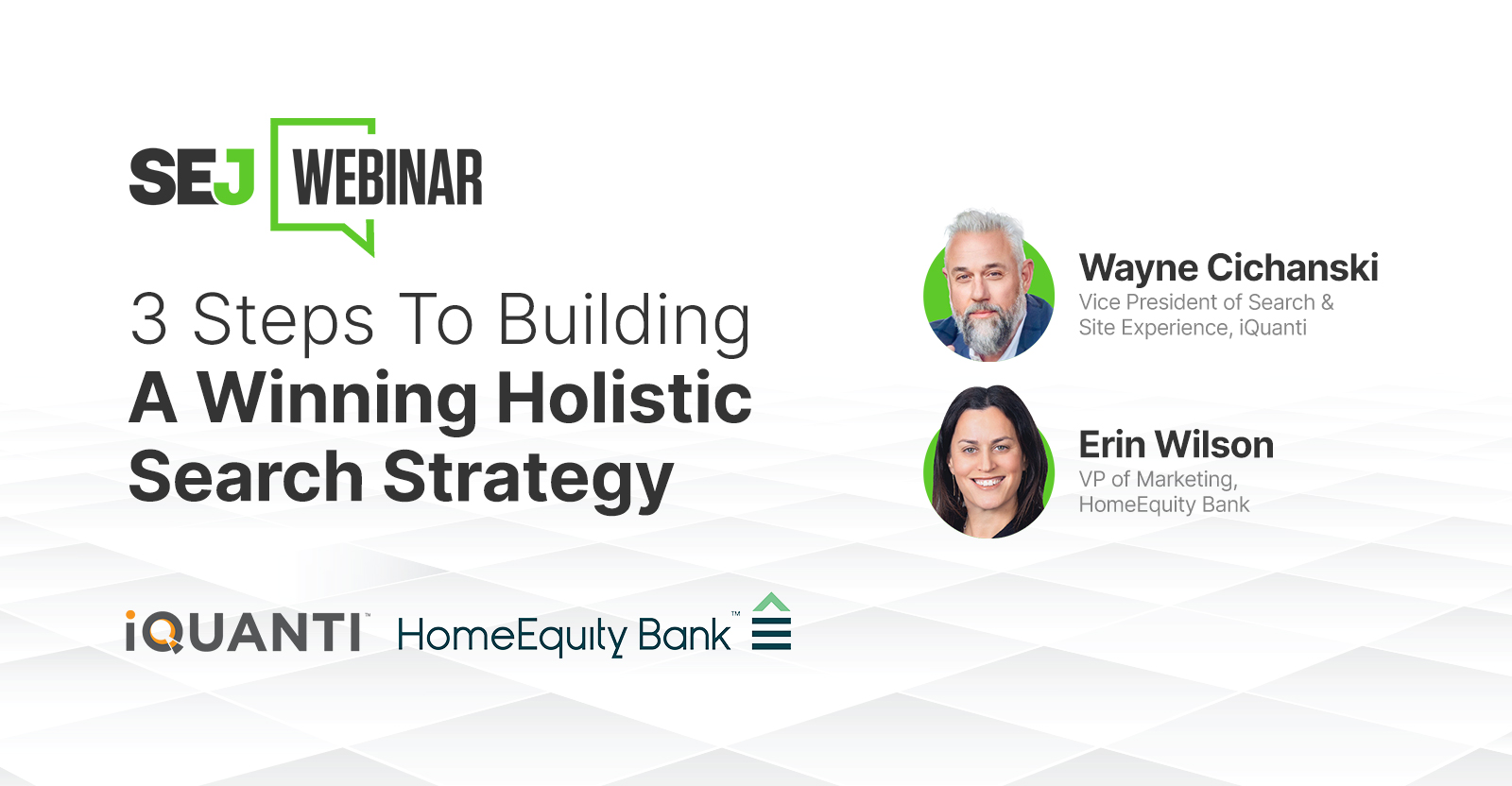
A multi-channel, holistic approach to search marketing is a must in today’s digital marketing space.
You can maximize digital shelf space by removing silos between teams and finding synergies on how paid and organic search can work together.
On May 10, I moderated a webinar with Wayne Cichanski, Vice President of Search and Site Experience at iQuanti, and Erin Wilson, VP of Marketing at HomeEquity Bank.
Cichanski and Wilson demonstrated how to combine insights and data from paid and organic channels to create a cohesive search strategy that enhances online visibility.
Here’s a summary of the webinar. To access the entire presentation, complete the form.
Step 1: Learn The Power Of Integrating Your Paid & Organic Search Strategy
SEO & SEM each have different roles, places, and advantages.
But these differences help provide insights into gaps that the other marketing school of thought has.
As such, these two channels can work very well together given a cohesive strategy that integrates both of their beneficial aspects.
So, how do you go about understanding the data that each process brings to the table?
How do you tap into the power of these two channels without needing to increase bandwidth?
One way is to start maximizing your digital shelf space.
[What is digital shelf space?] Find out – Instantly access the on-demand webinar →
Start By Maximizing Your Digital Shelf Space
Between paid results, organic results, People Also Ask (PAA), stories, local map packs, the AnswerBox, video carousels, and more, there are many areas in which you can own a higher market share of a SERP.
Screenshot by iQuanti, May 2023
So when you think about a cohesive strategy, you’ll need to consider these are these steps:
- Review total digital shelf space.
- Know what keywords trigger what.
- Build assets to acquire.
[Discover how to do each step] Instantly access the on-demand webinar →
After going through these steps, you can now start merging strategies.
Bring Different Tactics Together
Next, focus on synchronizing your research and common messaging across organic site pages, paid search ads, social, display, email, and thought leadership.
You can do this by:
- Carrying the messaging across the entire funnel.
- Using dual rankings to elevate impression share.
- Increasing the halo effect by driving paid to organic.
- Modifying bidding strategies for branded, non-branded mid-funnel vs. lower.
- Discovering and building a common foundation between paid and organic.
[Dive deeper] Instantly accesses the on-demand webinar →
Step 2: Understand The Roles Of Your Marketing Channels
Understanding the roles and expectations for each channel sets them up for maximum contribution.
But before you start, understand that customer centricity is vital. Always consider your customer’s needs, preferences, and behaviors.
Then, leverage each channel for different stages and behavioral needs of the user.
Screenshot by iQuanti, May 2023
Knowing each channel’s defined role means you’ll know what to expect and measure in each corresponding stage.
[Learn how HomeEquity Bank leverages each channel] Instantly access the on-demand webinar →
Step 3: Deliver A Connected Search Program
To understand the roles and expectations for maximum contribution, start attacking the SERP positions and journey milestones collectively by:
- Measuring them together.
- Identifying key themes along the journey.
- Developing bid strategies.
[Learn what each step entails] Instantly access the on-demand webinar →
Increase Conversions With Paid Branded & Non-Branded Search
Regarding Branded Search, focus on maximizing conversion & reducing leakage by occupying a secondary position from a neutral test bed site to push down competitors.
In other words, you can push the competitors down from the top by having a high-visibility listing.
In a Non-Brand Search, a good approach is to segment intents by conversion potential. This quadrant better explains this:
[Slides] 3 Steps To Building A Winning Holistic Search Strategy
Here’s the presentation:
Image Credits:
Featured Image: Paulo Bobita/






